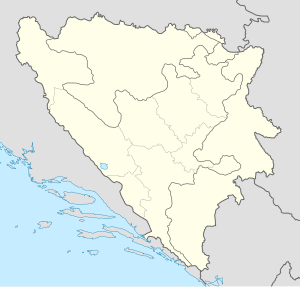Operation Southern Move
| Operation Southern Move | |||||||
|---|---|---|---|---|---|---|---|
| Part of the Bosnian War | |||||||
|
Objectives of Operation Southern Move ( |
|||||||
|
|||||||
| Belligerents | |||||||
|
|
|
||||||
| Commanders and leaders | |||||||
|
|
|
||||||
| Strength | |||||||
| 11,000–12,000 troops | 5,500 troops | ||||||
| Casualties and losses | |||||||
| See Aftermath section | |||||||
Croatian Army and Croatian Defence Council victory
Operation Southern Move (Croatian: Operacija južni potez) was the final Croatian Army (HV) and Croatian Defence Council (HVO) offensive of the Bosnian War. It took place in western Bosnia and Herzegovina on 8–11 October 1995. Its goal was to help the Army of the Republic of Bosnia and Herzegovina (ARBiH) whose positions around the town of Ključ, captured by them during Operation Sana, were endangered by a counteroffensive by the Army of Republika Srpska (VRS). The objectives of Operation Southern Move included the capture of the town of Mrkonjić Grad and positions on the Manjača Mountain which would allow the HV and the HVO to directly threaten Banja Luka, the largest Bosnian Serb city. Finally, the offensive was also aimed at capturing the Bočac Hydroelectric Power Station, the last significant source of electricity under VRS control in western Bosnia and Herzegovina. The combined HV and HVO forces were under the overall command of HV Major General Ante Gotovina.
The offensive achieved its objectives, and significantly contributed, along with Operations Sana and Maestral 2 to forcing the Bosnian Serb leadership to serious peace negotiations. A country-wide ceasefire came into effect on 12 October, one day after the offensive ended, and was soon followed by negotiations which produced the Dayton Agreement, ending the Bosnian War.
...
Wikipedia

